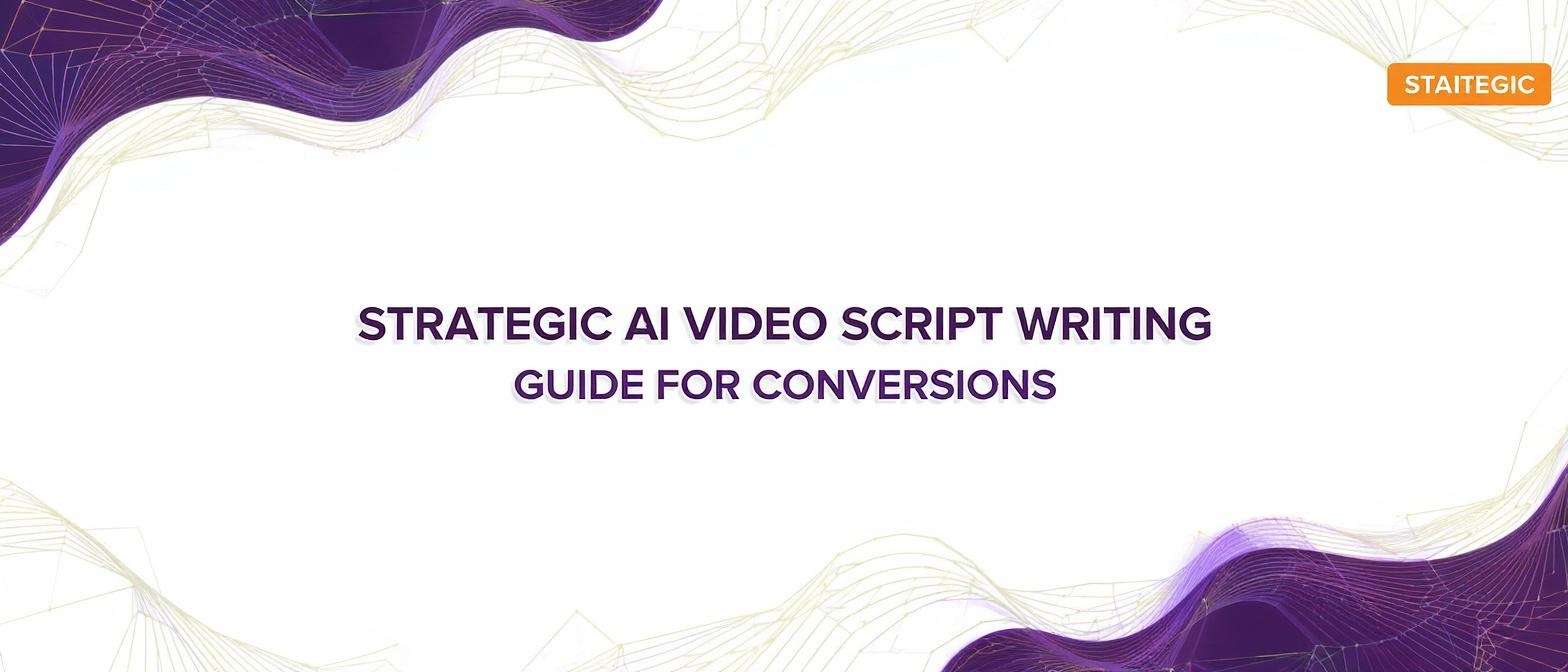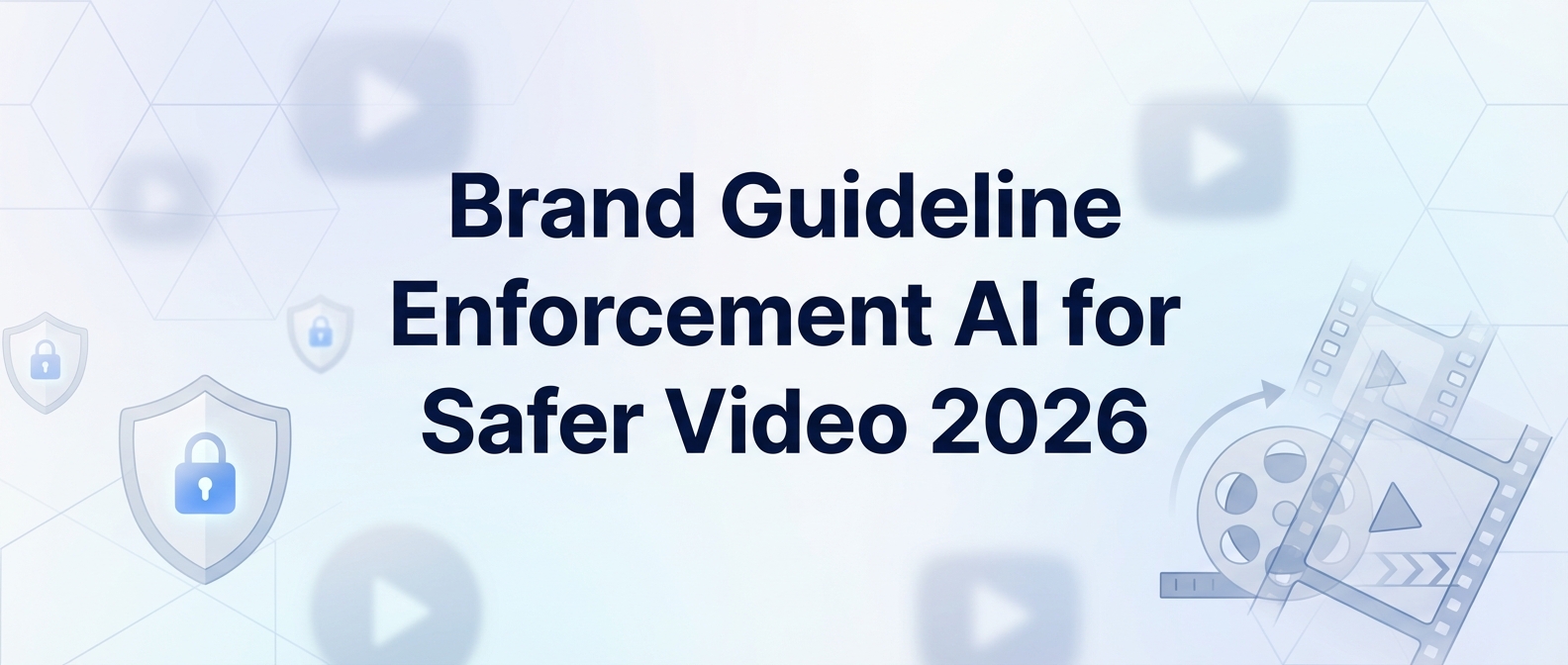Beyond the Prompt: The Strategic Guide to AI Video Script Writing That Converts
Estimated reading time: 11 minutes
Key Takeaways
- Establish a strategy before using AI to ensure purposeful, goal-oriented scripts.
- Persona building and ethical guidelines boost relevancy and trust in AI-generated videos.
- Human-AI collaboration enhances creativity, storytelling, and viewer engagement.
- Global scalability is facilitated by multilingual AI platforms that streamline localization.
- Data-driven optimization through A/B testing refines videos for higher ROI and performance.
The world of video content is undergoing a seismic shift. In an era where attention is the most valuable currency, the demand for high-quality, engaging video has never been greater. The landscape of AI video script writing is evolving at a breakneck pace, offering creators and marketers an unprecedented ability to generate content at scale. But here lies the critical challenge: while the tools are more accessible than ever, most AI-generated scripts feel hollow, generic, and fail to connect with their audience.
Many articles list common mistakes—don't use vague prompts, don't forget a call to action. While helpful, these warnings only scratch the surface. They teach you how to avoid failure, but they don't provide a roadmap for success. This guide goes beyond the pitfalls. It delivers a comprehensive, three-phase framework for creating compelling, high-ROI AI-generated video scripts that not only capture attention but drive meaningful action.
By mastering the art of strategic planning, creative human-AI collaboration, and data-driven performance optimization, you will learn to transform artificial intelligence from a simple tool into a powerful, strategic content engine. Let's move beyond the prompt and build a blueprint for excellence.
Phase 1: The Pre-Production Blueprint: Strategy Before the Script
The single greatest mistake in AI video script writing happens before a single word is generated: the failure to strategize. Jumping directly into prompting an AI is like setting sail without a map or a destination. The output might look like a script, but it will lack purpose and direction. A powerful script is built on a strong strategic foundation.
Defining Your "Why": Objective-First Scripting
Before you think about what your video will say, you must define why you are making it. Every video must have a primary, measurable objective. Are you trying to:
- Build Brand Awareness? The script should focus on storytelling, emotion, and brand values.
- Generate Leads? The script must identify a pain point and clearly position your product as the solution, leading to a specific call-to-action (CTA).
- Educate Customers? The script needs to be clear, concise, and structured to simplify complex information.
- Drive Sales? The script should be persuasive, highlighting benefits over features and creating a sense of urgency.
Without this clarity, your AI prompt will be generic, and so will the result. A prompt for a "video about our new software" is weak. A prompt for a "90-second top-of-funnel brand awareness video for millennial marketers that tells the story of how our software alleviates burnout" is strategic. This initial step dictates the tone, language, structure, and ultimate success of the project. The data is clear: strategy is non-negotiable. By 2025, Gartner predicts that 30% of outbound marketing messages from large organizations will be synthetically generated, making a clear strategy essential to cut through the automated noise.
Creating Your Audience Persona: Beyond Demographics
The competitor’s article mentions addressing "audience pain points," but this advice is superficial without a deep understanding of who your audience is. A truly effective script speaks to one person, not to a faceless crowd. Go beyond basic demographics (age, location) and build a rich psychographic persona:
- Goals & Aspirations: What does your ideal viewer want to achieve in their life or work?
- Pain Points & Frustrations: What specific problems keep them up at night? What obstacles stand in their way?
- Emotional Triggers: What kind of stories or messages resonate with them? Do they respond to humor, inspiration, fear of missing out, or data-driven logic?
- Media Consumption Habits: Where do they watch videos? On a noisy commute (requiring clear subtitles) or in a focused office environment (allowing for more complex information)?
This deep empathy allows your AI prompts to be incredibly specific, generating content that feels personal and resonant. According to a 2025 forecast from McKinsey, hyper-personalized content can lift revenues by up to 15% and increase marketing spend efficiency by 30%. That level of personalization is impossible without a detailed persona.
The Ethical Framework: Building Trust from Day One
In the rush to adopt new technology, ethics is often an afterthought. This is a critical error. Today’s consumers are more discerning than ever about digital manipulation, deepfakes, and data privacy. Building your AI video strategy on an ethical foundation is crucial for long-term brand trust. The competitor flags this as a final point, but it should be a foundational one.
This means asking critical questions before production begins:
- Transparency: Will you be clear that the content is AI-assisted or features an AI avatar?
- Consent and Licensing: Are the avatars you're using fully licensed? Are the voice clones ethically sourced? Using technology that relies on unauthorized digital replicas can expose your brand to significant legal and reputational risk.
This is where choosing the right platform is critical. Platforms like Studio by TrueFan AI enable creators to operate with confidence, utilizing a consent-first model with fully licensed, photorealistic avatars built from real influencers. This ensures your brand stays on the right side of digital ethics and builds, rather than erodes, audience trust. For more information on navigating this complex landscape, organizations like the Partnership on AI provide valuable resources and guidelines.
Phase 2: The Creative Core: Mastering the Human-AI Collaboration
With a robust strategy in place, you can now move to the creative process. This phase is not about letting the AI take over; it's about forming a powerful partnership. Your creative intuition, storytelling skills, and strategic goals guide the AI to produce its best work.
Prompt Engineering: From Vague Ideas to Vivid Scenes
"Using vague prompts" is a common mistake, but the solution isn't just to be "more specific." It's about engineering a perfect prompt. A world-class prompt acts as a creative brief for your AI co-writer.
Use the R.A.F.T.O.C. framework for consistently better results:
- R - Role: Tell the AI who it is. "Act as a world-class marketing copywriter specializing in direct-response video ads."
- A - Audience: Describe your detailed persona. "The audience is a skeptical but ambitious small business owner who feels overwhelmed by digital marketing."
- F - Format: Specify the exact script format. "Write a 60-second video script in a three-column format (Timecode, Visuals, Dialogue/VO)."
- T - Tone: Be descriptive. "The tone should be empathetic and authoritative, but also inspiring and slightly urgent. Avoid corporate jargon."
- O - Objective: State your primary goal. "The objective is to get the viewer to click the link and sign up for a free trial."
- C - Constraints: Provide clear guardrails. "The script must be under 150 words. It must mention the phrase '30-day money-back guarantee.' Do not use complex technical terms."
This level of detail transforms the AI from a simple text generator into a focused creative partner.
Beyond Words: Weaving in Visuals and Performance Cues
A common failure of AI-generated scripts is that they are written for the ear, not the eye. A video script is a blueprint for a multimedia experience. Your job is to guide the AI to think visually and cinematically.
Instead of just prompting for dialogue, explicitly ask the AI to include:
- Visual Cues: What should be on screen? B-roll footage, product close-ups, animated graphics, or text overlays?
- Performance Directions: How should the lines be delivered? Specify tone shifts, pauses for emphasis, and even facial expressions for the avatar.
- Pacing: Indicate the rhythm of the video. Is it fast-paced and energetic or slow and deliberate?
| Weak Script Element | Strong Script Element (with Cues) |
|---|---|
| "Our new software is very efficient." |
(VO, upbeat and confident): "Stop drowning in spreadsheets."
[VISUAL]: Quick cuts of a frustrated person looking at a complex Excel file, then a clean, simple dashboard of the software. |
| "It will help your business grow." |
(VO, slight pause for emphasis): "This isn't just about efficiency..."
(leans in slightly): "...it's about reclaiming your time." [VISUAL]: A graph showing a steep upward trend. Text overlay: "+40% Revenue." |
By embedding these cues directly into your prompt and refining them in the output, you create a script that is a true production guide, not just a text document.
The Narrative Arc: Applying Classic Storytelling to AI Scripts
At its core, every great video tells a story. AI doesn't instinctively understand narrative structure; it understands patterns. You must provide the framework. The most effective and timeless structure is the simple narrative arc, which you can find in resources from creative giants like Pixar's 22 Rules of Storytelling.
- The Hook (The Setup): Start with a relatable problem or a shocking statistic that grabs the viewer's attention in the first 3-5 seconds.
- Rising Action (The Conflict): Agitate the problem. Show the consequences of not solving it. Build tension and empathy.
- The Climax (The Solution): Introduce your product or idea as the turning point—the hero of the story.
- Falling Action (The Benefits): Clearly demonstrate the positive outcomes of using your solution. Show the "after" state.
- The Resolution (The CTA): End with a clear, compelling call to action that tells the viewer exactly what to do next.
Prompt your AI to generate a script following this five-act structure. This instantly elevates the content from a boring list of features to a compelling narrative that holds attention.
Scaling Globally: The Power of Multilingual Scripting
One of the most significant content gaps in most discussions about AI video is its incredible power to break down language barriers. The ability to localize content for global audiences was once a monstrously expensive and time-consuming endeavor involving translation services, foreign voice actors, and complex editing. This is a key area where AI offers an almost unfair advantage.
The global appetite for localized content is exploding. The language services industry is projected to exceed $73 billion by 2025, with video being a primary driver. AI-powered platforms can now translate a script and generate a new video with a perfectly lip-synced avatar in a different language in minutes, not weeks. Studio by TrueFan AI's 175+ language support and AI avatars make global campaigns feasible overnight, ensuring perfect lip-sync and consistent brand messaging across every market. This isn't just a feature; it's a fundamental shift in how businesses can approach international growth.
Phase 3: The Post-Generation Polish: Optimization for Performance
Generating the script is not the end of the process. The final phase separates amateur creators from professional strategists. This is where you refine, test, and measure the script's performance to ensure it meets its strategic objectives.
The Human Review: Your Most Important Quality Check
AI is a powerful tool, but it lacks human judgment, brand knowledge, and emotional nuance. Once the AI has delivered its draft, a thorough human review is non-negotiable.
Check for:
- Brand Voice: Does it sound like your brand? Adjust the wording to match your unique style guide.
- Emotional Resonance: Does the script evoke the intended feeling? Tweak phrases to be more powerful or empathetic.
- Factual Accuracy: AI can sometimes "hallucinate" or invent facts. Double-check all data points, statistics, and claims.
- Flow and Rhythm: Read the script out loud. Does it flow naturally? Are there any awkward phrases or clunky sentences?
This human touch is the secret ingredient that makes AI-generated content feel authentic and trustworthy.
Measuring What Matters: A/B Testing and Iteration
Never assume your first script is the best possible version. The digital landscape allows for rapid testing and data-driven iteration. A/B testing is your most powerful tool for optimization. Create two versions of your video with one key difference and measure which performs better.
Things to test include:
- The Hook: Try a question vs. a bold statement in the first three seconds.
- The Call-to-Action: Test "Learn More" vs. "Get Your Free Trial."
- The Avatar: Does one avatar resonate more with your audience than another?
- The Tone: Test a humorous script against a more serious, data-driven one.
Companies that embrace this process see massive returns. According to industry analysis from sources like VWO, consistent A/B testing can lead to significant uplifts in conversion rates, sometimes by over 40%. Data, not guesswork, should guide your creative evolution.
Calculating the True Value: The ROI of AI Video Creation
Finally, to justify continued investment in AI tools, you must measure their return on investment (ROI). The ROI of AI video creation comes from two primary areas:
- Cost & Time Savings: Calculate the hours and budget saved compared to traditional video production. Factor in costs for actors, film crews, location rentals, and lengthy post-production timelines that are now eliminated.
- Performance Uplift: Track the metrics tied to your original objective. Did the video increase website traffic, lead generation, conversion rates, or audience engagement?
The data on this is compelling. A 2025 market report highlighted that while only 18% of marketers currently use generative AI in video production, a staggering 75% of them report increased ROI. This advantage is undeniable. Solutions like Studio by TrueFan AI demonstrate ROI through drastic reductions in production timelines—from weeks to minutes—and by enabling rapid testing and localization, which were previously cost-prohibitive. This powerful combination of efficiency and effectiveness is what makes AI a game-changing technology for modern content teams, as noted in business analyses by publications like Forbes.
Frequently Asked Questions
Q1: Can AI truly replicate human emotion in video scripts?
AI itself does not feel emotion, but it is exceptionally good at recognizing and replicating the patterns of emotional language. By providing detailed, emotion-driven prompts (e.g., "Write in an empathetic and reassuring tone, acknowledging the user's frustration"), you can guide the AI to generate scripts that resonate on a deeply human level. The final emotional polish, however, always comes from the human reviewer who ensures the nuance is perfect.
Q2: What are the legal implications of using AI-generated voices and avatars?
This is a critical consideration. The legal landscape is evolving, but the core principle is consent. Using AI to clone a voice or create an avatar without explicit permission is a significant legal and ethical breach. It is essential to use platforms that prioritize ethics, ensuring all avatars are based on models who have been compensated and have given full consent, and that all voices are either ethically licensed or synthetically generated without replicating a specific person's voice without permission.
Q3: How do I maintain brand consistency across hundreds of AI-generated videos?
Consistency at scale is a key strength of AI. The best practice is to create a detailed "Brand Voice & Style Guide" specifically for your AI prompts. This document should include key messaging pillars, approved terminology, a "do not use" word list, and examples of your brand's tone. By feeding this information into your prompts, you create a consistent creative framework that ensures every script, regardless of the topic, sounds like it came from your brand.
Q4: What's the best way to integrate AI video script writing into an existing marketing workflow?
Start with a pilot project. Choose one area of your content strategy—such as social media ads or internal training videos—and apply the three-phase framework (Strategy, Collaboration, Optimization). Document the process, measure the results, and create internal best practices. Once you've proven the value and refined your workflow, you can begin to scale its use across other departments and campaigns, integrating it as a standard tool in your content creation toolkit.
Q5: How can I ensure my AI-generated video scripts are unique and not generic?
The uniqueness of an AI script is a direct reflection of the uniqueness of your input. To avoid generic content, you must feed the AI specific, proprietary information. This includes your detailed audience personas, your unique brand voice, specific data points or customer testimonials, and a strong narrative angle. This involves refining your prompts and using advanced platforms. For instance, when using Studio by TrueFan AI, you can leverage unique real-influencer avatars and an in-browser editor to add custom backgrounds and subtitles, ensuring every video is distinct to your brand.
Conclusion: Your New Strategic Co-Pilot
AI video script writing is not about replacing human creativity; it is about augmenting it. The platforms and algorithms are merely tools. Without a strategic mind to wield them, they will only ever produce mediocre, forgettable content.
By adopting this three-phase framework—building a robust Strategy before you write, fostering a true human-AI Collaboration during creation, and relentlessly focusing on Optimization after generation—you elevate your role from a simple prompter to a master strategist. You transform the AI from an unpredictable black box into a reliable, scalable, and powerful creative co-pilot. The future of video isn't just automated; it's intelligent, strategic, and more human than ever before.




